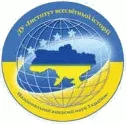«Азійсько-Тихоокеанська мрія» – китайський проєкт регіональної інтеграції
##plugins.themes.bootstrap3.article.main##
Анотація
У ХХІ столітті Китай значно посилив свою роль в світових історичних процесах. За 40 років політики реформ та відкритості Китай не тільки перетворився на країну-лідера в світовому економічному розвитку, він також став активним гравцем на світовій політичній арені. Китай почав виявлять більший інтерес до світового розвитку і поряд з цим почав активно інтегруватись у світове співтовариство, прагнучи довести світові переваги від співпраці з Китаєм. Керівництво країни вважає, що Китай не може стояти осторонь світових процесів, і як решта країн світу бути заручником політики інших країн та нести тягар усіх негативних наслідків від такої політики. В результаті було взято курс на активну інтеграцію з світовим співтовариством та посилення участі та впливу Китаю в світових процесах. З цією метою було розроблено кілька стратегічних стратегій спрямованих на досягнення визначеної мети серед яких – «йти зовні», «глобалізуватись», «інтернаціоналізуватись» та інші. Водночас посилення інтеграційних процесів в світі не могло залишити керівництво країни байдужими, тому Китай почав приділяти більшої уваги до участі як в глобальних так і регіональних інтеграційних процесах. Одним з таких напрямків стало приєднання Китаю в 1991 р. до форму Азійсько-Тихоокеанського економічного співробітництва (АТЕС). Визначено три аспекти для майбутнього АТЕС, а саме: поглиблена регіональна економічна інтеграція; сприяння інноваційному розвитку, економічна реформа та зростання; посилення всебічного розвитку інфраструктури та з’єднання. Ці напрями визначили три ключові аспекти концепції «Азійсько-Тихоокеанської мрії» – розвиток та економічна з’єднаність, об’єднання Азії з акцентом на гармонію, взаємну вигоду та процвітання в регіоні. Китайська ініціатива «Азійсько-Тихоокеанської мрії» спрямована на підтримку стабільних та дружніх партнерських стосунків з сусідніми країнами, з метою формування взаємодовірчих відносин. Китай розраховує спільно з партнерами створити прекрасний регіон, який поведе за собою світ, сприятиме всім сторонам та принесе процвітання майбутнім поколінням. В цьому контексті керівництво Китаю визначило низку напрямків розвитку для АТР.
Завантаження
##plugins.themes.bootstrap3.article.details##
Посилання
Oliynyk, O.M. (2016). Kytay v “Aziys’komu stolitti”: heopolitychnyy vymir, hlobal’na ekonomichna stratehiya, rehional’ni priorytety [China in the “Asian Century”: geopolitical dimension, global economic strategy, regional priorities]. Istorychnyy rozvytok hlobal’noyi peryferiyi yak chynnyk transformatsiyi suchasnoyi svitosystemy: zbirnyk naukovykh prats’, NAN Ukrayiny. DU “Instytut vsesvitn’oyi istoriyi NAN Ukrayiny. Instytut Konfutsiya Kyyivs’koho natsional’noho linhvistychnoho universytetu [Historical development of the global periphery as a factor in the transformation of the modern world system: a collection of scientific papers, NAS of Ukraine. SI “Institute of World History of NAS of Ukraine”. Confucius Institute, Kyiv National Linguistic University.] (pp. 104-127). Kyiv. [In Ukrainian].
Oliynyk, O.M. (2014). Zrostannya cherez innovatsiyi [Growth through innovation]. Problemy nauky [Problems of science], 11-12, (167-168), pp. 53-60. [In Ukrainian].
柳斌杰. (2006). 21 世纪中国外交往的哲学. – 北京:外交出版设. [In Chinese].
银温泉. (2007). 21 全球化视野下的中国发展之路. – 北京:外交出版设. [In Chinese].
Chu Shulong, (2012). China’s Diplomatic Strategy and Foreign Relations. China Today, 11, (63), pp. 37-39. [In English].
Hou Ruili, (2014). Chinese Dream, a Dream Influencing the World. China Today, 1, (63), pp. 18-21. [In English].
Wang Yuzhu, (2014). Free Trade Area of the Asia-Pacific Promotes Regional Economic Integration. China Today, 11, (63), pp. 24-25. [In English].
APEC at a Glance, 2021. [Online]. Available from: https://www.apec.org/Publications/2021/02/ APEC-at-a-Glance-2021 [In English].
Yin Pumin, (2015). A Second wind for an ancient route. Beijing review, 6, (58), pp. 14-17. [In English].
RCEP. [Online]. Available from: https://rcepsec.org/2020/11/26/rcep-a-new-trade-agreement-that-will-shape-global-economics-and-politics/ [In English].
Xi Jinpin, (2017). Sozdaniye partnyorskich otnosheniy v ATR, osnovannych na vzaimodoverii, tolerantnosti i vzaimovyigrashnom sotrudnichectve [Creation of partnerships in the Asia-Pacific region based on mutual trust, tolerance and mutually beneficial cooperation]. O gosudarstvennom upravlenii [On public administration], (pp. 651-653). Pekin: Meshchdunarodnoe izdatelsvto. [In Russian].
中国外交. 中华人民共和国外交部政策规划司. – 2019. – 北京. [In Chinese].
Lo Ze. Klyuchevoy shag dlya ABII // Kitay. – 2015. – N 8 (118). – c. 24–25.
Ji Jing, (2017). Strengthened bonds. Beijing review, 15, (58), p. 14-17. [In English].
(2017). China Advance Globalization. China Today, 5, (66), p. 6. [In English].
Xi Jinping. Xi Jinping President of the People’s Republic of China At the 26th APEC Economic Leaders’ Meeting. [Online]. Available from: https://www.chinadailyasia.com/articles/ 209/71/238/1542517880907.html?newsId=53959 [In English].
Xi Jinping. Keynote Speech by H.E. Xi Jinping President of the People’s Republic of China At the Boao Forum for Asia Annual Conference 2021. [Online]. Available from: https://www.chinadaily.com.cn/a/202104/20/WS607e62d4a31024ad0bab6ba7.html [In English].

